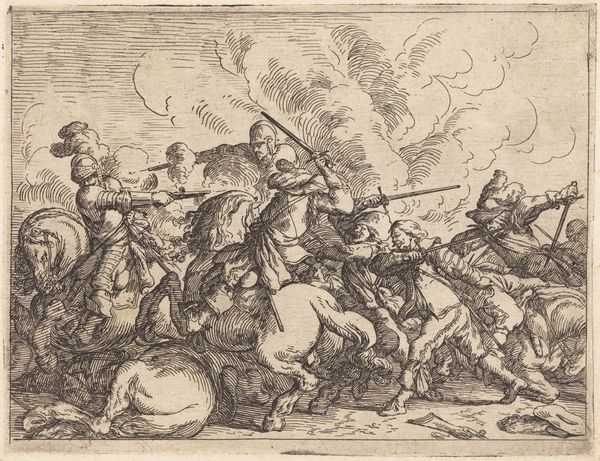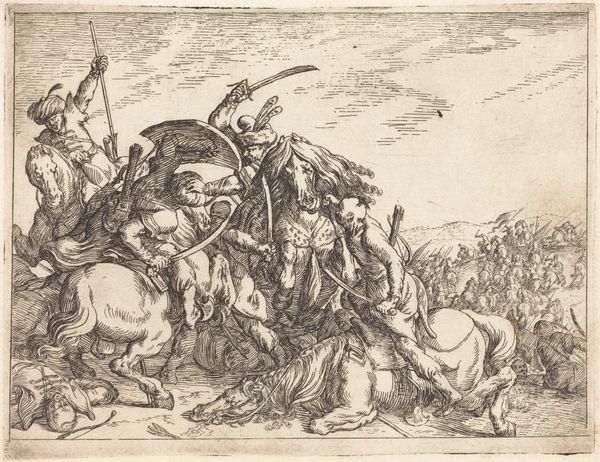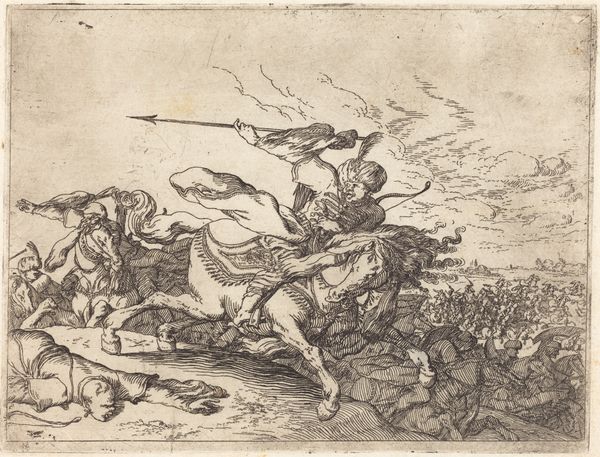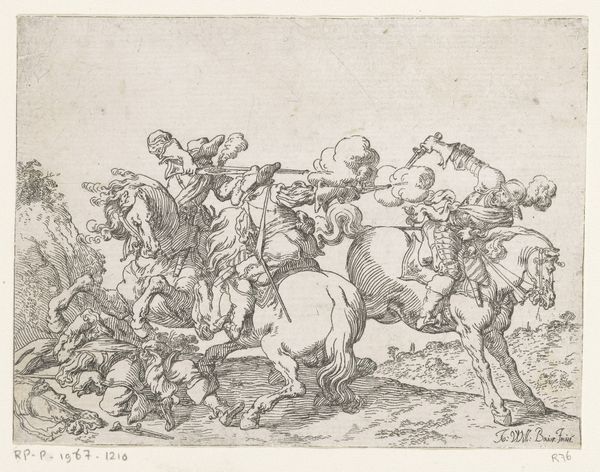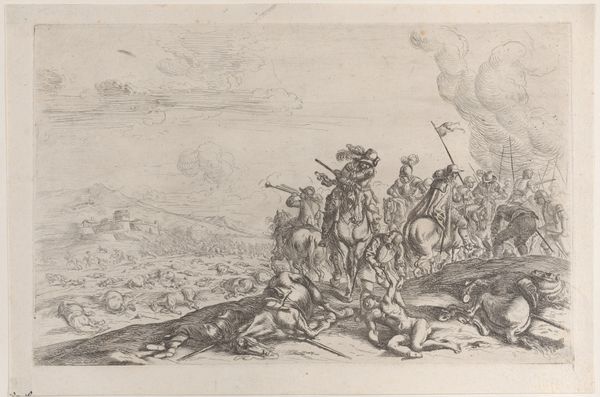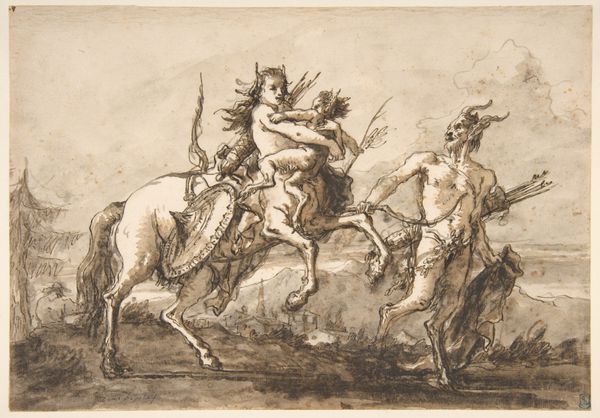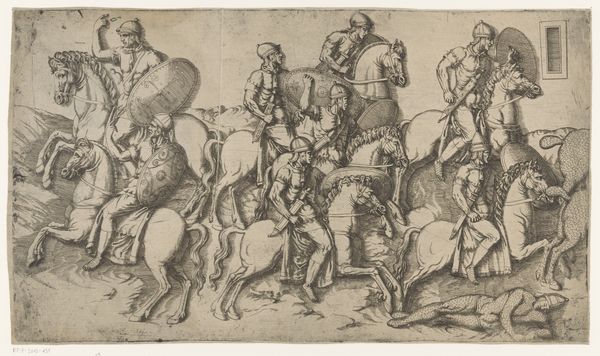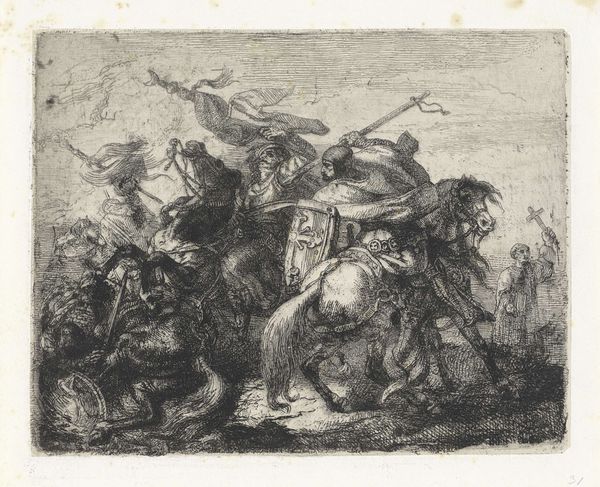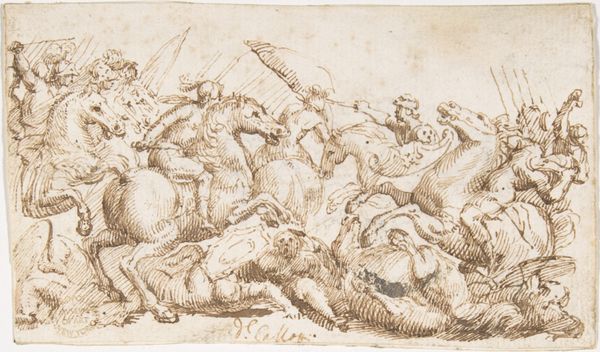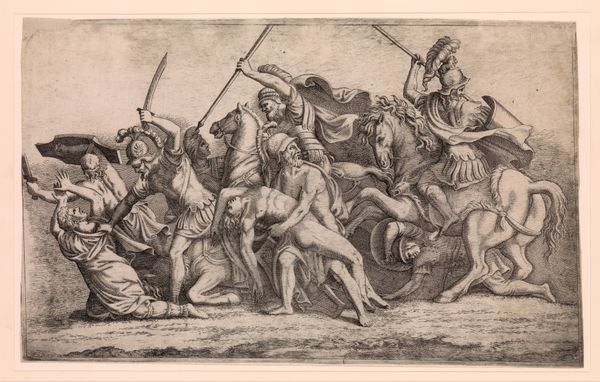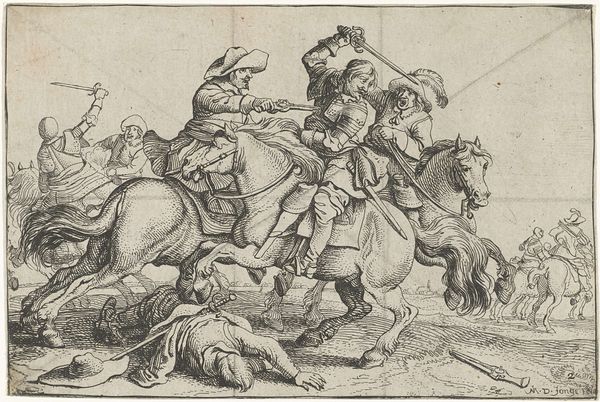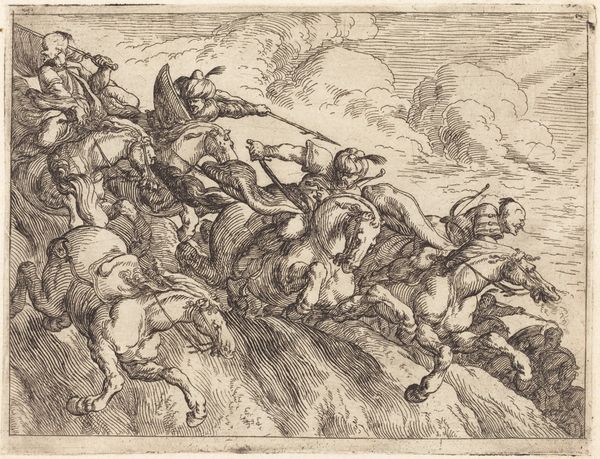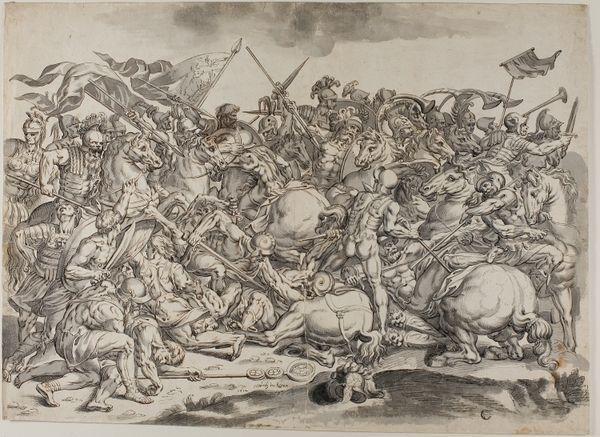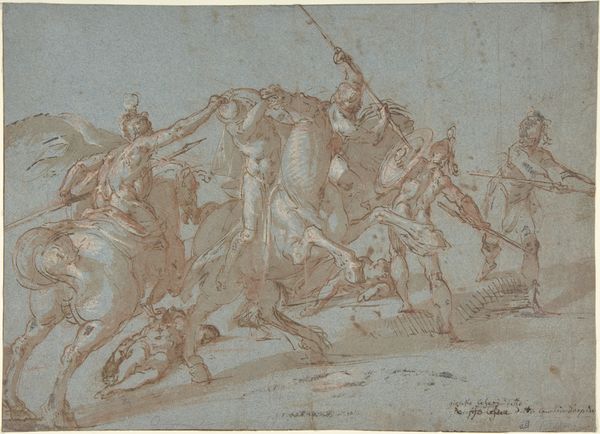
print, etching
#
baroque
# print
#
etching
#
landscape
#
figuration
#
history-painting
Copyright: National Gallery of Art: CC0 1.0
Curator: Here we have Johann Wilhelm Baur’s etching, *Capricci di varie battaglie*, made in 1635. Editor: Well, “capricious” feels like the right word! It's a roiling mess of figures, an explosion of lines—it almost feels claustrophobic despite the relatively open sky. Curator: It certainly captures the frenzy and chaos of battle. Baur seems fascinated by conflict, exploring how the figures and horses blend almost seamlessly into one another. It suggests something about the human psyche and the seductive pull of war. Notice how little the combatants' faces tell us. Editor: Yes, all those obscured faces and abstracted limbs certainly remove any sense of individual tragedy. As an etching, you have to consider the laborious process of creating such a detailed and dynamic image through the controlled erosion of metal. What kind of time investment was involved in this print's production? I find myself wondering who could afford such meticulous labor, and the economic relationships underlying the war being depicted. Curator: That's an interesting angle. The original buyer, undoubtedly someone with connections to the ruling classes, would have been interested in what the piece told him about himself as a man of power. Beyond that, though, prints democratized images, ideas and values for wider circulation to people throughout society, for social or political purposes, thus it offered broader reflection. Editor: You're right; I am thinking also about how easily an etching plate can be used to make duplicate impressions! With that in mind, the proliferation and availability of imagery like this had political ramifications that would influence perceptions about war, society, class...all interconnected. What does war, even capriciously depicted war, communicate in 1635? Curator: It speaks to the values placed upon military expansion, conquest, honor...themes that permeated the period. The image may romanticize the brutality through allegory, in a sense immortalizing the powerful patron. This image’s ability to distill meaning into the interplay of light and shadow speaks volumes. Editor: I think examining its mode of production lets us look closely at the historical values it portrays through a different lens. To truly appreciate this “capricious” battle scene, one cannot avoid thinking about who commissioned it, who made it, how it was made, and who had access to the resulting prints. Curator: Ultimately, the convergence of symbolism and artistic choices speaks to something profound, even beyond the immediate context. Editor: Precisely. By understanding its materiality and broader economic influences, the nuances emerge even more strikingly.
Comments
No comments
Be the first to comment and join the conversation on the ultimate creative platform.
